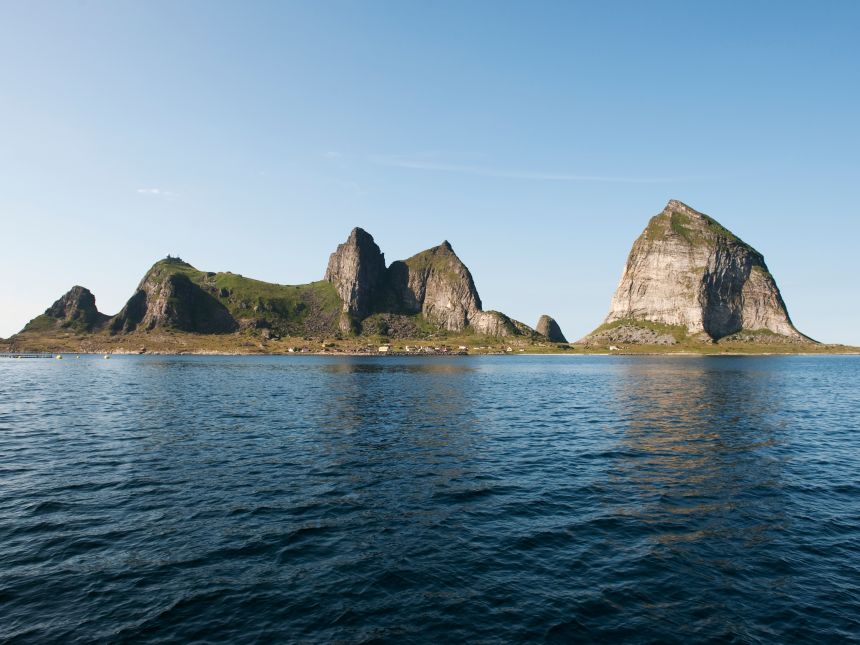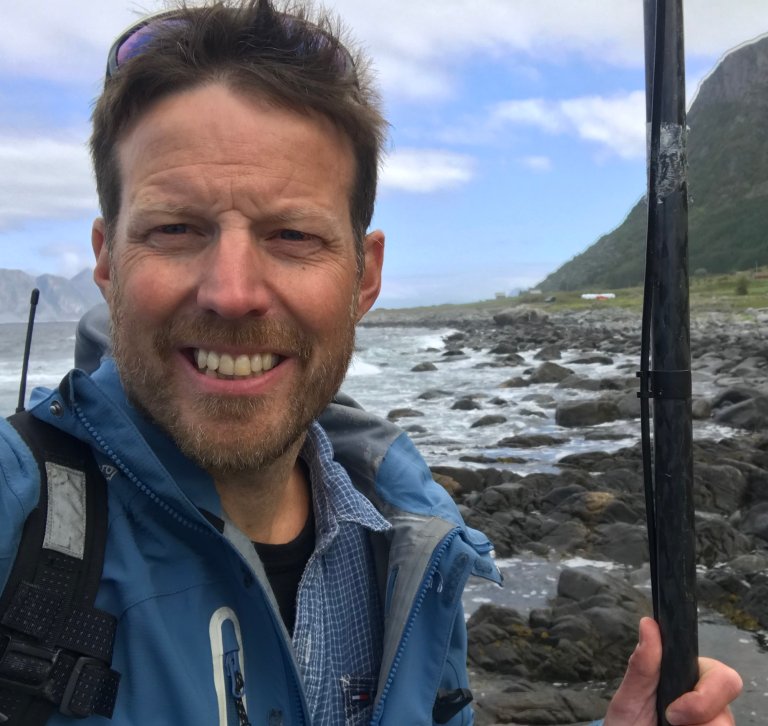
The Helgeland coast: worth its weight in gold
The nature cannot speak up for itself in political processes, and several of nature’s valuable contributions to people are often overseen when decisions are made. In a large research initiative commissioned by the Nordic Council of Ministers, the coastal ecosystems in the Nordic region have been assessed according to a model inspired by the Intergovernmental Platform on Biodiversity and Ecosystem Services (IPBES). In this model, both status and trends for biological diversity, ecosystem services, and ecosystem threats are put in context. The Helgeland coast in Norway was one of the selected location cases.
– The coastal environment in Helgeland is valuable in various ways. It constitutes the basis for harvest of marine resources, and the pristine nature is a major trademark for tourism. The biological diversity is steadily increasing. But there are still human-driven pressures on the coastal ecosystem, says marine biologist Kasper Hancke at Norwegian Institute for Water Research (NIVA). He was responsible for the expert assessment of the coastal environment at Helgeland.
The seas link the Nordic countries together
In addition to a common culture, the Nordic countries also share the same seas – and this was the background for the coastal focus of the Nordic cooperation. Hence, the researchers were to assess the Nordic coastal ecosystems – but as one hundred thousand kilometres of coast is quite an extensive job, they selected eleven case ecosystems across Greenland, Iceland, the Faroe Islands, Norway, Sweden, Denmark, and Finland. This resulted in two thick reports, in addition to a summary for policy makers, which were delivered to the Nordic Council of Ministries when the project was finished earlier this year.
The reports identify biological diversity, ecosystem services and pressures on the ecosystems, as well as political advice to the governments on how to protect the coastal environments in the Nordic countries.
Untouched at Helgeland
In Norway, Helgeland was one of the chosen areas, assessed by NIVA.
– We selected Helgeland because it stands out as a pristine and well preserved region relative to more challenged and disturbed regions as The Sound between Denmark and Sweden, and because Helgeland has an old cultural heritage, Hancke says.
After studying almost 60 scientific publications about the coastal environment of Helgeland, Hancke and his colleagues concluded that their assumption about an prestine nature was quite descriptive. 88 % of the water masses in Helgeland had “good” or “very good” ecological status, and eutrophication was only evident in the fjords. The condition of the biological diversity had even increased the past 25 years.
– Recharge naturally
«Want to find yourself? Breathe freely and calmly in a vast and open landscape. Think clearly».
In their marketing, Northern Norway Tourist Board appeal to the recreational value of the Helgeland nature. The culture and identity of the Nordic people have been shaped by the yearly cycle of physical and biological phenomena for generations, and as a result, people today need nature for their mental health and wellbeing.
– People in the Nordic countries appreciate easy access to coastal areas. This was one of the conclusions in the report. In Sweden, Norway, and Denmark, people have the right of public access to beaches and coastline and are not as dependent on protected areas for experiencing coastal environment as in many other developed countries, Hancke says.
Nature’s contributions to people
Hence, even the cultural value of the coastal ecosystems was accounted for in the expert assessment. The reason for this is that there is an ongoing shift in how we see the value of nature: From being solely a place for resource harvesting, the nature has become more of an actor with several roles that serve a range of human needs. These ecosystem services are classified as supporting, regulating, provisioning, and cultural:
In addition to producing foods and resources for people, intact ecosystems clean the air and water, protect against floods, maintain the nutrient cycle, and are responsible for the marine primary production. And, as mentioned, nature’s cultural services are essential for human identity, culture, and mental health.
– The total value of the ecosystem services is hard to estimate - but it is very high, and is important to communicate to decision makers, Hancke says.
Carbon storage in kelp forests
In the 1970ies, the kelp forests along the Norwegian coast were severely suffering from grazing by sea urchins. 2000 square kilometres of kelp forest disappeared between the Møre region and the Russian border, but after decades of absence, the kelp forests are now recovering, including along the Helgeland coast. The reason is complex but it probably has to do with warming of the coastal water masses hampering sea urchin reproduction, pushing the population northward. The kelp forests are fundamental for the coastal ecosystems, as a myriad of algae, molluscs, crustaceans, fish, birds, and marine mammals find their food and shelter in these underwater forests.
In addition, the recovery of kelp forests has likely a positive feedback on the climate change.

– Kelp is a global contributor for carbon capture and storage, especially during re-establishment of kelp forests, Hancke says.
– There is a need for more research within this field. But there are indications that the potential for CO2 capture and storage in the world’s kelp forests is as big as in the rains forests – maybe even bigger, Hancke continues.
– Further, kelp is probably an important source for permanent carbon storage. There is evidence that the kelp which is loosened from its rocky substrate during storm events, is transported to the deep sea and permanently stored at the floor.
Provides the Norwegian Sea with nutrients
In addition to contributions to carbon capture and storage, the NIVA researchers identified a range of other ecosystem services at Helgeland that we humans benefit from: Blue mussels, kelp, and sea grass meadows purify and filtrate the water; the kelp forests mitigate the forces of breaking waves; and harvest of fish, shrimps, and crabs give an economic income, to mention some. Common to all these ecosystem services, is that their delivery is dependent on the whole ecosystem being intact. The positive effects of the ecosystem services at the Helgeland coast reach far outside the coastal areas, as the primary production at Helgeland serves the entire Norwegian Sea with food.
Negative trend for herring, cod, and sea birds
Still, there were also some bad news. Hancke lists up all the animals that have had a negative trend the past years: Herring, cod, and most sea birds, particularly eider, kittiwake, and lesser black-backed gull. Herring plays an important role in the ecosystem as food source for other animals at higher levels in the food chain, while the coastal cod is important in the balance between kelp and urchin. Coastal cod populations are close to a critical limit, and the researchers believe that this is due to poor recruitment.
Natural and anthropogenic drivers
Another part of the assessment was to identify which drivers, natural or anthropogenic, which influence the coastal ecosystems the most. As opposed to most other coastal ecosystems in Europe, in Helgeland, the natural drivers were the most important: drivers like weather, solar radiation, and predator-prey interactions. Yet, the list of negative anthropogenic drivers is long: Constructions, coastal development, pollution, invasive species, global warming, and tourism.
– The political challenge in Helgeland is to balance the goals within coastal development, industrial development, agriculture, aquaculture and tourism with the need to preserve the coastal ecosystems and environment. The key is to secure a sustainable development of the coastal regions, which can be achieved from a knowledge-based management approach which appreciates the contributions that nature provide to human societies and a healthy living, Hancke concludes.
The project, «Biodiversity and ecosystem services in Nordic coastal ecosystems: an IPBES-like assessment», was financed by the Nordic Council of Ministries.